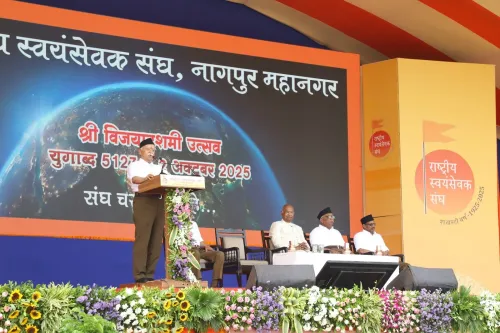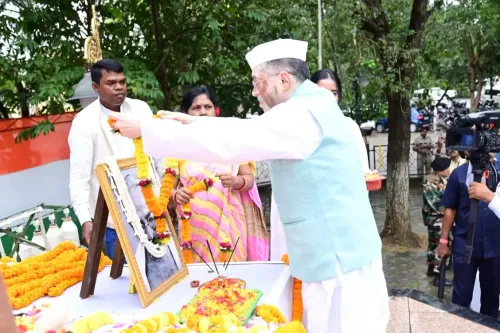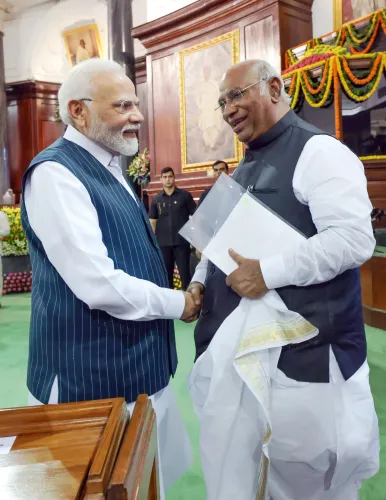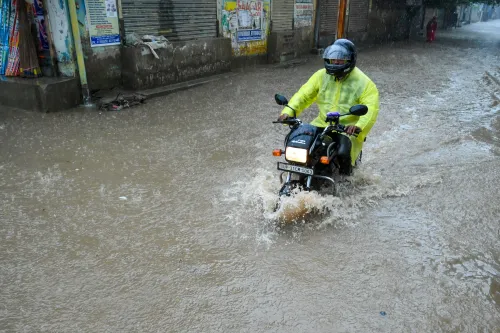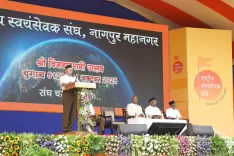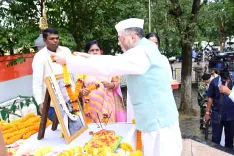Is Honour Killing the Dark Reality of MP?

Synopsis
Key Takeaways
- Honour killings remain a serious issue in India, particularly linked to caste.
- Recent incidents reflect systemic societal problems.
- Legal actions are being taken, but much work remains.
- Community engagement is crucial to combat these practices.
- Education plays a key role in changing mindsets.
Morena, Oct 2 (NationPress) In a deeply distressing incident that has sent shockwaves through the Chambal-Gwalior area of Madhya Pradesh, police have taken into custody Bharat Sikarwar and his wife for the alleged murder of their 17-year-old daughter, Divya Sikarwar, who was a Class 12 student.
Along with the parents' arrest, authorities have filed charges against 23 additional individuals, identifying 11 of them, while the identities of the remaining suspects are still under investigation.
This tragic event, believed to be an “honour killing”, has sparked renewed discussions about caste traditions and the extreme measures families resort to in order to uphold them.
Divya was reportedly shot dead within her home on the night of September 23. Her badly decomposed body was discovered five days later in the Kunwari River, wrapped in plastic and anchored with a stone—indicative of an attempt to conceal both evidence and stigma, according to police reports.
In a statement to IANS, Assistant Superintendent of Police Surendra Pal Singh Dabar confirmed the apprehension of the parents. “We have filed an FIR in this case and taken into custody Divya’s father and mother following the autopsy findings. At least ten others have been implicated for assisting Divya’s father in disposing of her body without notifying authorities. The murder weapon—a licensed revolver—has been confiscated,” Dabar explained.
The incident occurred in the Shivnagar neighborhood under the Civil Lines Police Station in Morena. Investigators believe that Bharat, also referred to as Bantu, meticulously orchestrated the murder.
He allegedly timed the act to coincide with the evening Aarti, during which loud devotional music echoed outside their residence. As Divya stepped onto the balcony to observe the ritual, her father fired a shot. The sound was muted by the religious music, going unnoticed except by her younger sister, who witnessed the act and fled in panic.
Bharat emerged from the house with a scarf wrapped around Divya’s head, claiming she was unconscious. A neighbor offered his car, and Bharat placed Divya inside, ostensibly to rush her to the hospital. However, midway, he changed direction toward a nearby village, informing the driver that she had succumbed.
Feeling apprehensive, Bharat switched Divya’s body to another vehicle, asserting he would perform her “Jal Dag”—a water cremation. Later, he would claim that Divya had taken her own life, but forensic experts refuted this, noting a point-blank gunshot wound to the head.
The family's narrative shifted from electrocution to suicide, intensifying the enigma and suspicion. Notably, the family never reported Divya missing.
The post-mortem examination was conducted at Gwalior Medical College due to the significant decomposition of the body.
Authorities suspect that Divya’s involvement with a young man from a marginalized caste may have incited the fatal act.
The family stated that Divya managed household finances and had access to a firearm registered to her uncle, which was kept in her closet, police officials revealed.
This incident is not an isolated one. Earlier this year, a grandfather in Morena allegedly shot his granddaughter over an inter-caste relationship, and in January, a 20-year-old woman, Tanu Gurjar, was killed by her father and cousin in Gwalior.

